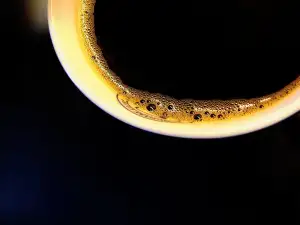Shine Bright: Ultimate Guide on How to Clean Stainless Steel Surfaces at Home

- Gather materials: white vinegar, microfiber cloth, dish soap, warm water.
- Mix equal parts vinegar and water in a spray bottle.
- Spray the solution on the stainless steel surface.
- Wipe with a microfiber cloth in the direction of the grain.
- For tough stains, make a paste with baking soda and water.
- Apply the paste on the stain and let it sit for a few minutes.
- Scrub gently with a soft-bristled brush.
- Rinse with warm water and dry with a clean cloth.
- Polish with a few drops of olive oil for a shiny finish.
Gather materials: white vinegar, microfiber cloth, dish soap, warm water.
To start cleaning stainless steel surfaces at home, gather the essential materials: white vinegar, a microfiber cloth, dish soap, and warm water. These items are effective in removing dirt, grime, and fingerprints from stainless steel without causing damage. White vinegar acts as a natural cleaner, while the microfiber cloth is gentle on the surface. Dish soap helps cut through grease, and warm water aids in the cleaning process. Having these supplies ready will ensure a successful cleaning experience for your stainless steel appliances or fixtures.
Mix equal parts vinegar and water in a spray bottle.
To effectively clean stainless steel surfaces at home, start by mixing equal parts white vinegar and water in a spray bottle. This simple solution is a powerful cleaner that helps to break down grime and grease on the stainless steel. Vinegar is acidic and works well to dissolve mineral deposits and stains, leaving the surface sparkling clean. The diluted mixture is gentle yet effective, making it safe to use on most stainless steel appliances and fixtures. Once you have your vinegar and water solution ready, you are all set to begin restoring the shine to your stainless steel surfaces.
Spray the solution on the stainless steel surface.
To clean stainless steel surfaces effectively at home, start by mixing equal parts white vinegar and water in a spray bottle. This solution is a powerful cleaner that helps to remove dirt, grime, and smudges from stainless steel. Once the solution is ready, spray it generously onto the stainless steel surface you wish to clean. The acidic nature of vinegar helps to break down any residue or stains on the surface, making it easier to wipe away with a microfiber cloth. Remember to always wipe in the direction of the grain to prevent scratching and ensure a streak-free finish.
Wipe with a microfiber cloth in the direction of the grain.
Once you have sprayed the vinegar and water solution onto the stainless steel surface, take a clean microfiber cloth and wipe in the direction of the grain. This method helps to prevent streaks and ensures that you are effectively cleaning the surface. The gentle motion along the grain helps to lift dirt and grime without causing any damage to the stainless steel finish. Remember to use a fresh section of the cloth as needed to avoid spreading any residue around.
For tough stains, make a paste with baking soda and water.
For tough stains on stainless steel surfaces, you can create a powerful cleaning paste using common household items. Simply mix baking soda with water to form a thick paste. This mixture acts as a gentle abrasive that helps lift stubborn stains without damaging the stainless steel. Apply the paste directly onto the stain and allow it to sit for a few minutes to penetrate and break down the grime. Afterward, gently scrub the area with a soft-bristled brush to further loosen the residue. This method is effective in restoring the shine of your stainless steel surfaces without harsh chemicals or abrasive cleaners.
Apply the paste on the stain and let it sit for a few minutes.
To tackle tough stains on stainless steel surfaces, create a paste using baking soda and water. Apply this paste directly onto the stain, ensuring it covers the affected area completely. Allow the paste to sit for a few minutes to penetrate and loosen the stubborn grime or marks. This waiting period is crucial as it gives the baking soda time to work its magic on the stain, making it easier to remove during the cleaning process.
Scrub gently with a soft-bristled brush.
To effectively remove tough stains on stainless steel surfaces, it is essential to scrub gently with a soft-bristled brush. This helps to dislodge the stubborn residue without scratching or damaging the stainless steel finish. Be sure to use a brush with soft bristles to prevent any potential scratches on the surface. Gently scrub in a circular motion until the stain starts to lift, taking care not to apply too much pressure. This method is particularly effective for removing dried-on food particles or stubborn grease stains that may have accumulated over time.
Rinse with warm water and dry with a clean cloth.
After gently scrubbing the tough stains with a soft-bristled brush, it's essential to rinse the stainless steel surface with warm water. This step helps to remove any remaining residue from the cleaning solution and baking soda paste. Once rinsed, dry the surface thoroughly with a clean cloth to prevent water spots or streaks from forming. Proper drying also helps maintain the stainless steel's luster and prevents potential corrosion.
Polish with a few drops of olive oil for a shiny finish.
To achieve a shiny finish on your stainless steel surface, polish it with a few drops of olive oil. Olive oil not only helps to remove streaks and fingerprints but also adds a protective layer to prevent future smudges. Simply apply a small amount of olive oil onto a clean microfiber cloth and rub it onto the stainless steel surface in the direction of the grain. This will leave your stainless steel looking glossy and well-maintained, enhancing its overall appearance in your home.
Published: 06. 05. 2024
Category: Home



